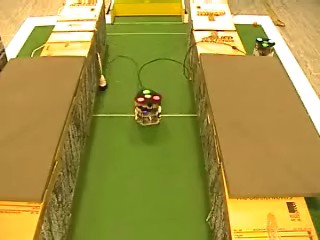Side Wall Image Sequence
Below is the full side wall image sequence used for offboard comparisons. Images are in pgm and ppm format.
Publications
- "Comparison of temporal filters for optical flow estimation in
continuous mobile robot navigation", by C. McCarthy and N. Barnes.
Proceedings of ISER'04 International Symposium on Experimental Robotics,
Singapore, 2004 (in press).
- "Performance of optical flow techniques for indoor navigation with a mob
ile robot", by C. McCarthy and N. Barnes. Proceedings of IEEE International
Conference on Robotics and Automation (ICRA2004), pp 5093-5098, New Orleans, US
A, 2004.
- "Performance of temporal filters for optical flow estimation in mobile r
obot
corridor centring and visual odometry", by C. McCarthy and N. Barnes.
Proceedings of the 2003 Australasian Conference on Robotics and Automation
.
Brisbane, Australia, 2003.
Created by Chris McCarthy.
Dept. of Computer Science and Software
Engineering,
The University of Melbourne.
Last Updated: 23 Feb, 2005.

